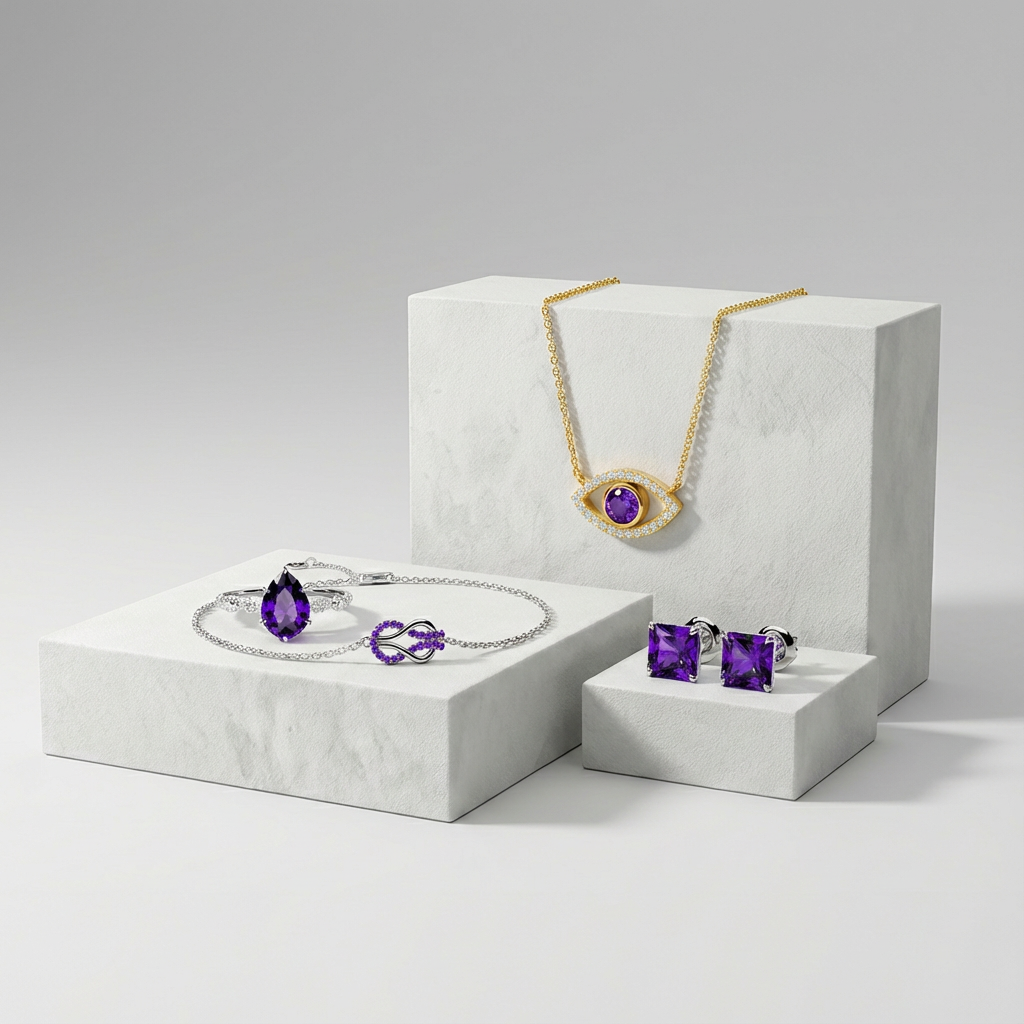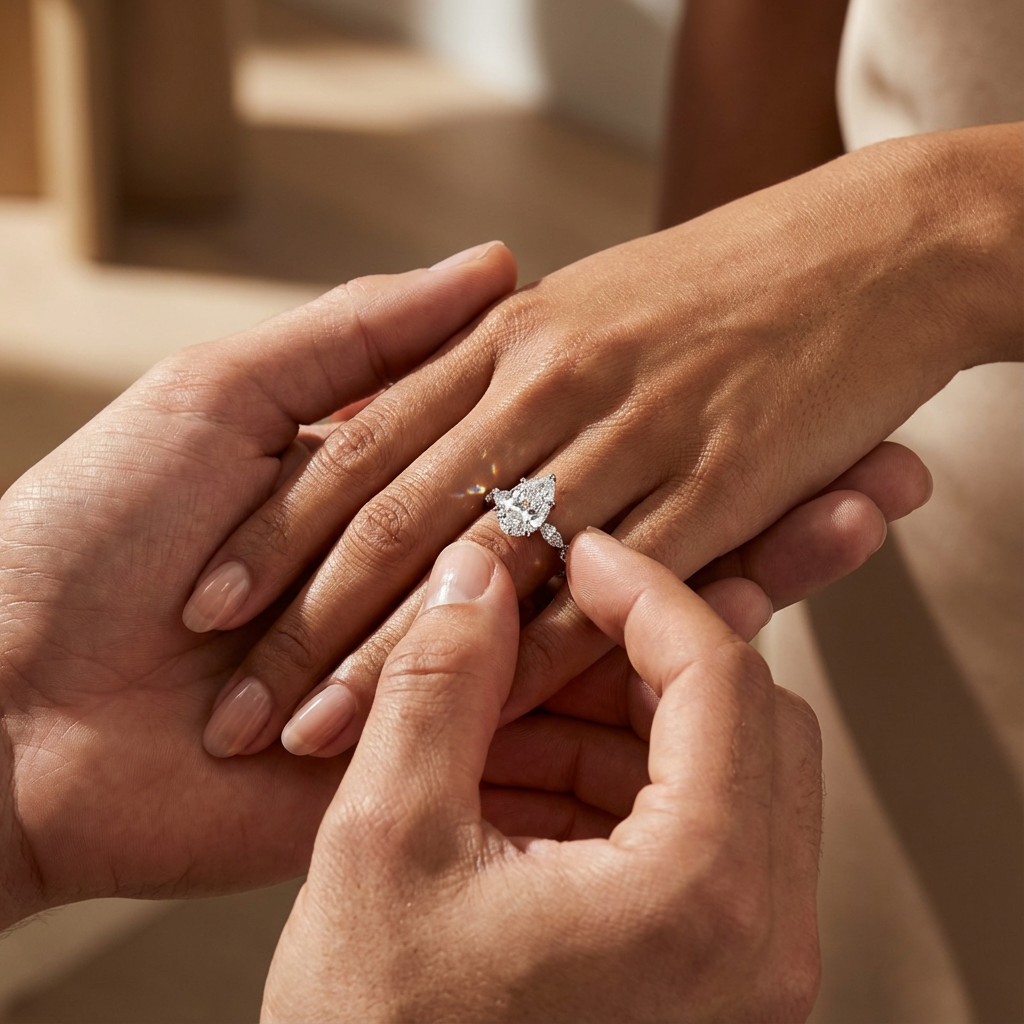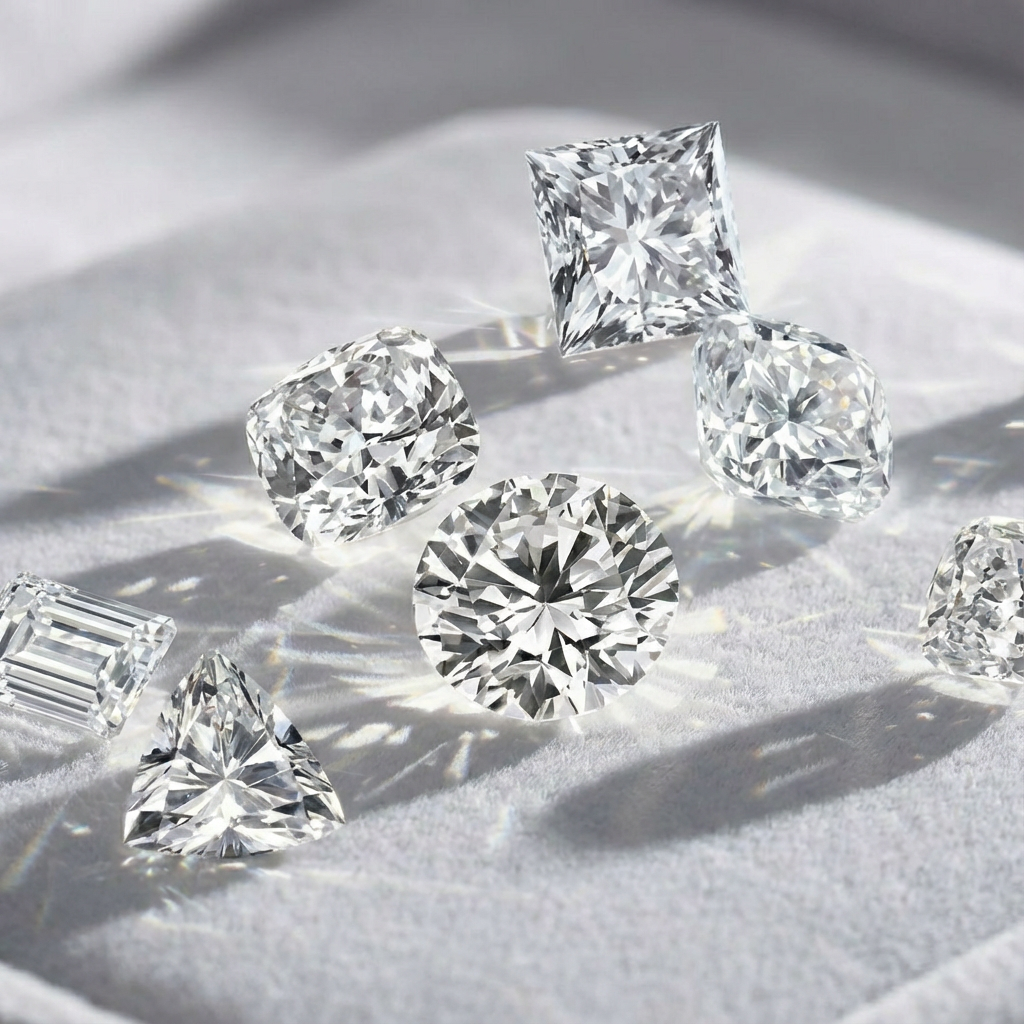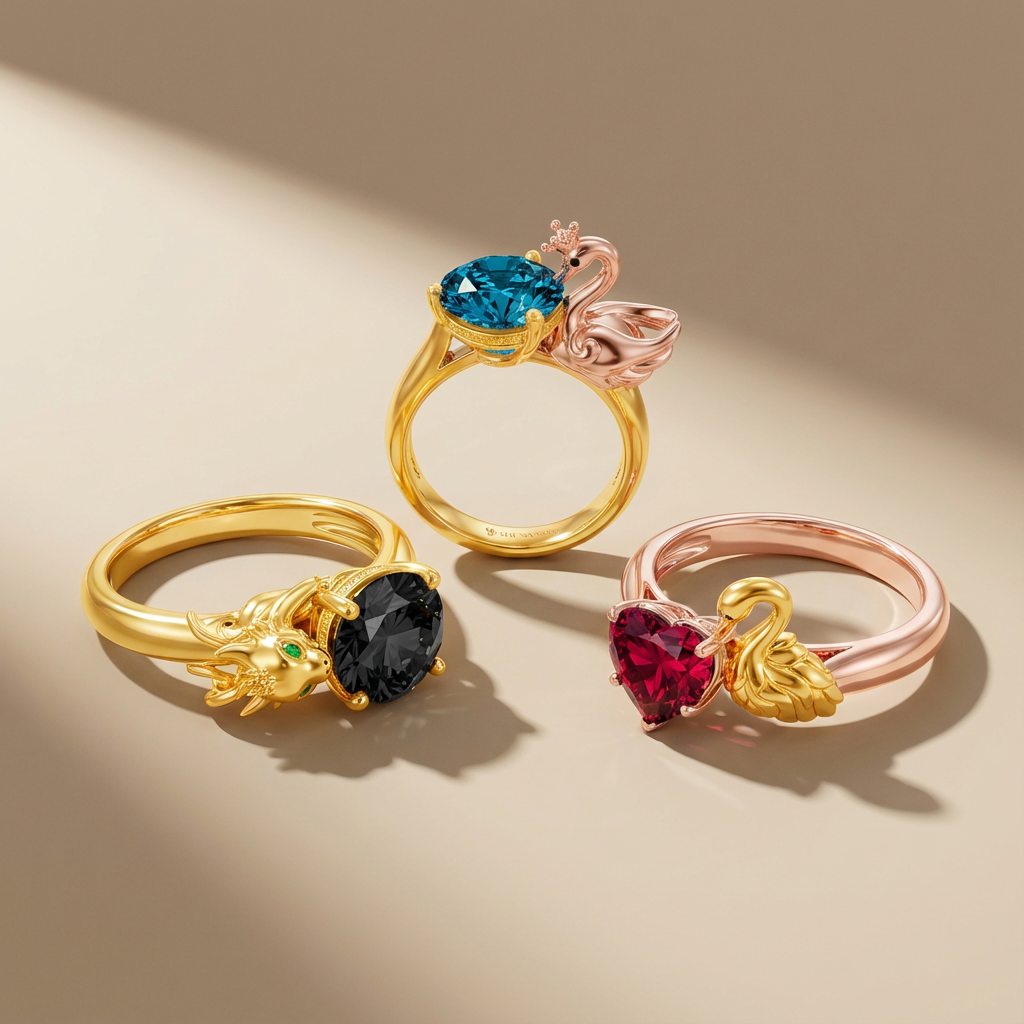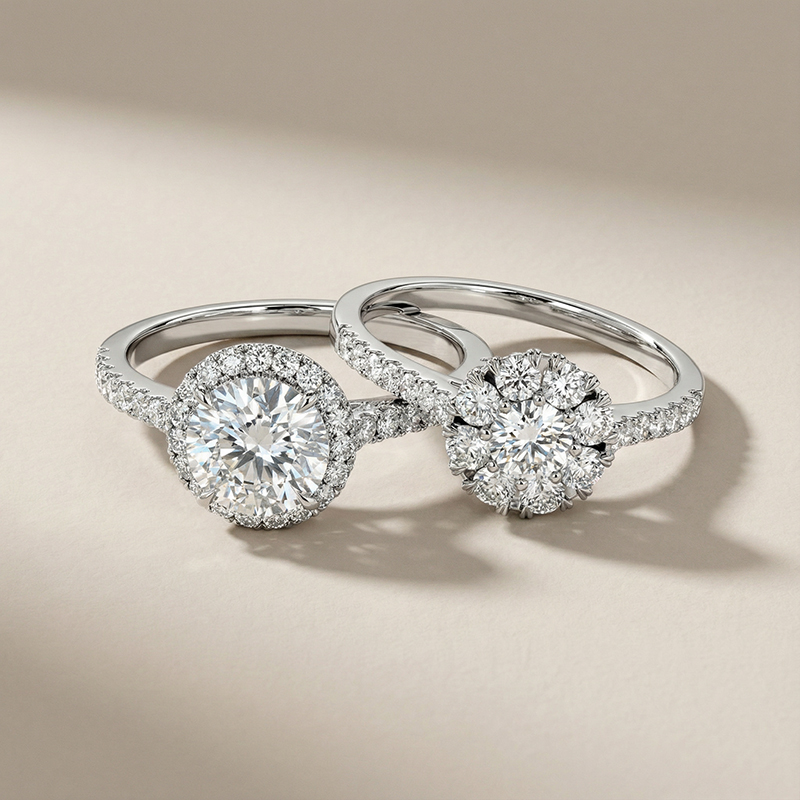An engagement ring is more than just a piece of jewelry; it symbolizes love, commitment, and the beginning of a lifelong journey together. While the center stone often takes the spotlight, the intricate details of the ring's design truly bring its beauty to life. From the way the center stone is held in place to the subtle embellishments along the band, every element plays a crucial role in creating a ring that's not just stunning but also uniquely meaningful. Let's dive into the world of engagement ring design and discover the artistry behind these timeless treasures.
Prongs
Prongs are the small metal claws that hold your center stone securely in place. They play a crucial role in both the security and aesthetics of your ring. Typically, rings feature four or six prongs, though some designs may use more or fewer depending on the size and shape of the stone. The choice of prong style can dramatically alter the ring’s overall look and feel.
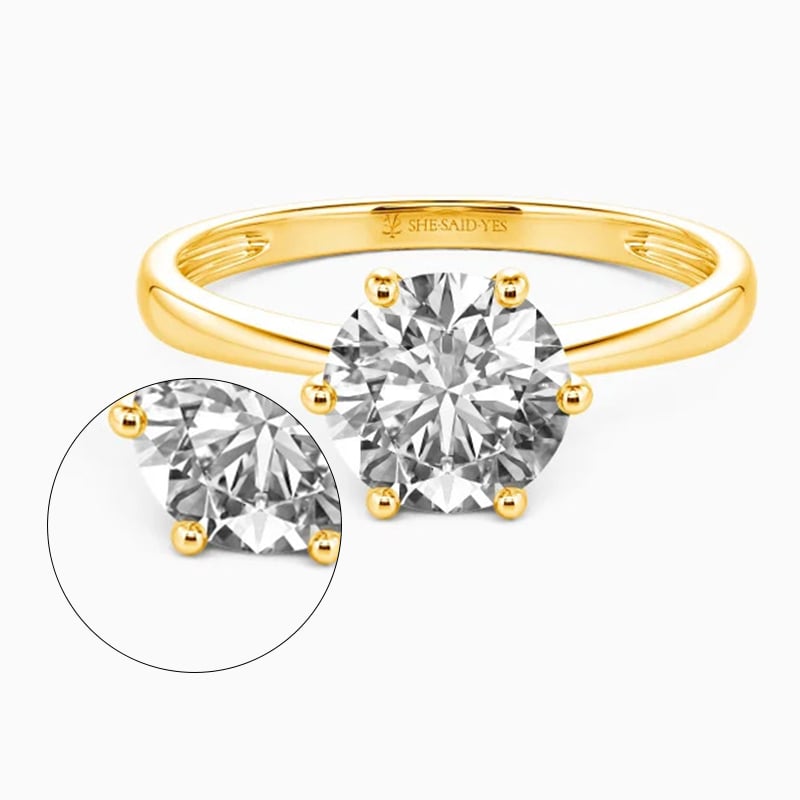
1. Bead Prongs
Bead prongs are small, round prongs that resemble tiny metal beads. They offer a delicate and classic look, allowing maximum light to enter the diamond. Besides, bead prongs are versatile and work well with various diamond shapes, particularly round and oval cuts.
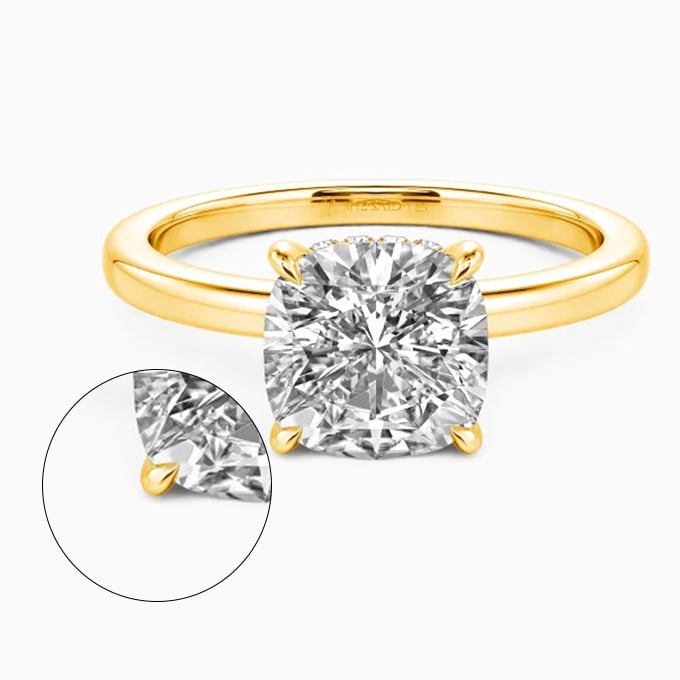
2. Claw Prongs
Claw prongs, also known as eagle claws, have a more pointed and dramatic appearance. They grip the diamond securely while exposing more of the stone’s surface. This style is popular for its ability to make diamonds appear larger and is often used in solitaire settings.
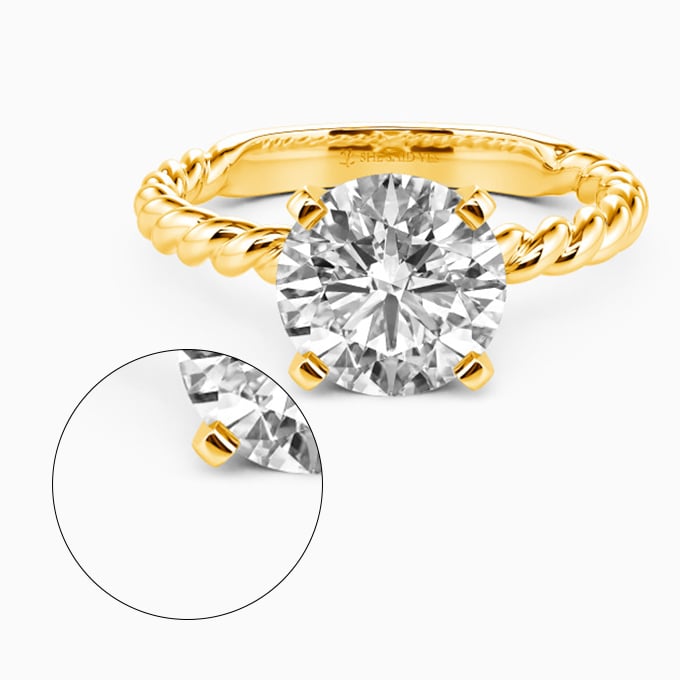
3. Flat Prongs
Flat prongs have a smooth, flat tip that lies flush against the diamond’s surface. They offer a sleek, modern look and provide excellent security. Flat prongs are less likely to snag on clothing and are a good choice for those with active lifestyles.
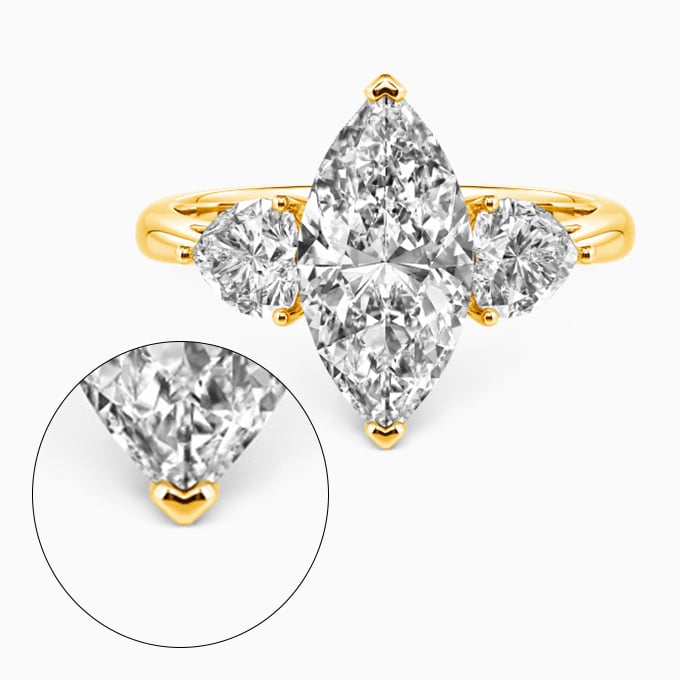
4. V-shaped Prongs
V-shaped prongs are specially designed to protect the pointed corners of princess, pear, heart, and marquise-cut stones. They cradle these vulnerable areas, reducing the risk of chipping while maintaining the stone’s sharp angles and unique shape.
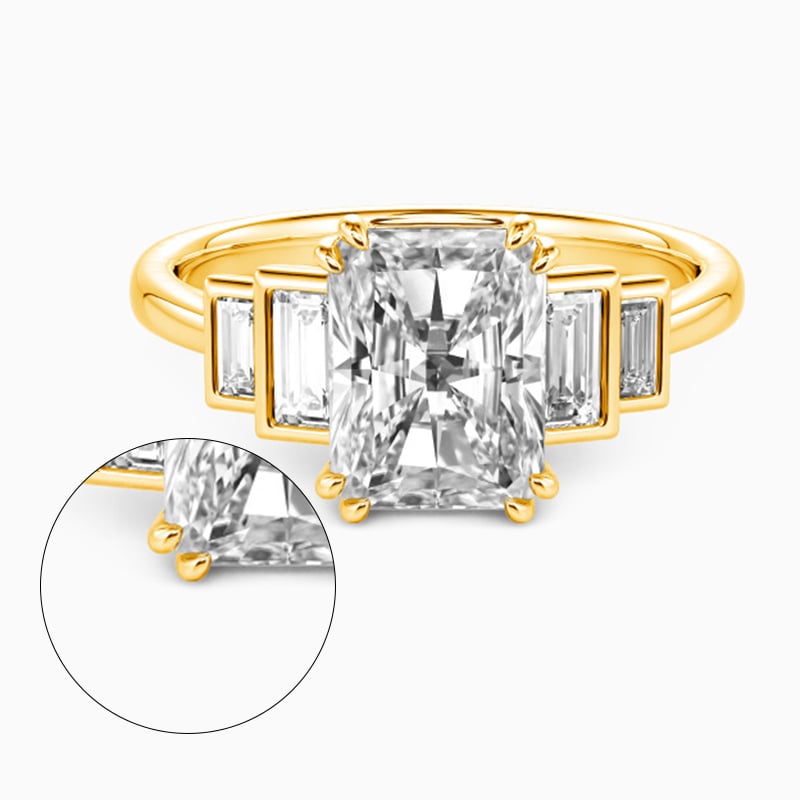
5. Double Prongs
Double prongs use two slender prongs side-by-side instead of a single, thicker prong. This style offers enhanced security and a unique, decorative look. Double prongs can also add visual interest to a ring and are often used in vintage-inspired designs.
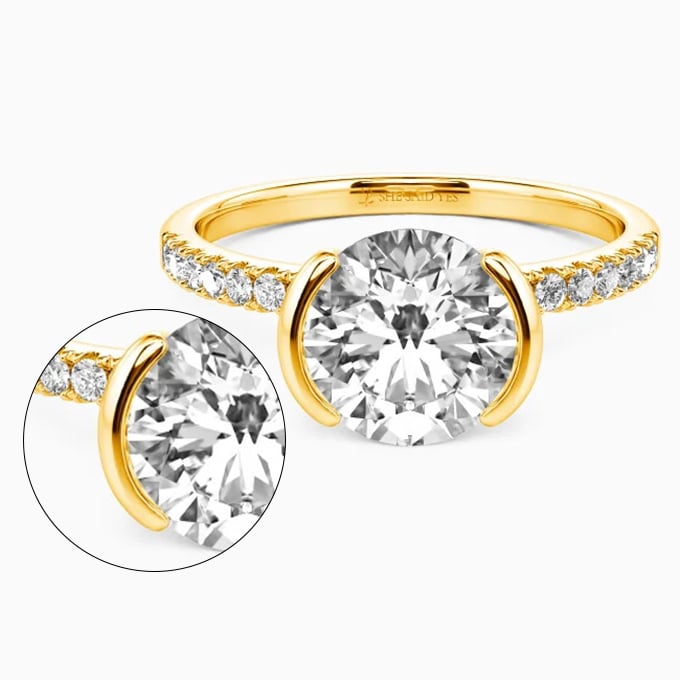
6. Bezel/Half Bezel
While not technically a prong, a bezel is a popular alternative that encircles the entire diamond with a metal rim. A half-bezel covers only part of the stone. This style offers maximum protection and a smooth, contemporary look.
Shank
The shank is the circular part of the ring that wraps around your finger. It’s not just a means to wear the ring, but a crucial element of the overall design. The style of the shank can significantly impact the ring’s appearance, comfort, and how it complements the center stone. From classic straight shanks to more intricate designs, the choice of shank style can reflect personal taste and enhance the ring’s overall aesthetic.
1. Straight Shank
A straight shank maintains a consistent width around the entire circumference of the ring. This classic style offers a clean, timeless look that complements a wide variety of center stone shapes and sizes. Straight shanks are versatile and can be thin and delicate or wide and substantial, depending on personal preference.
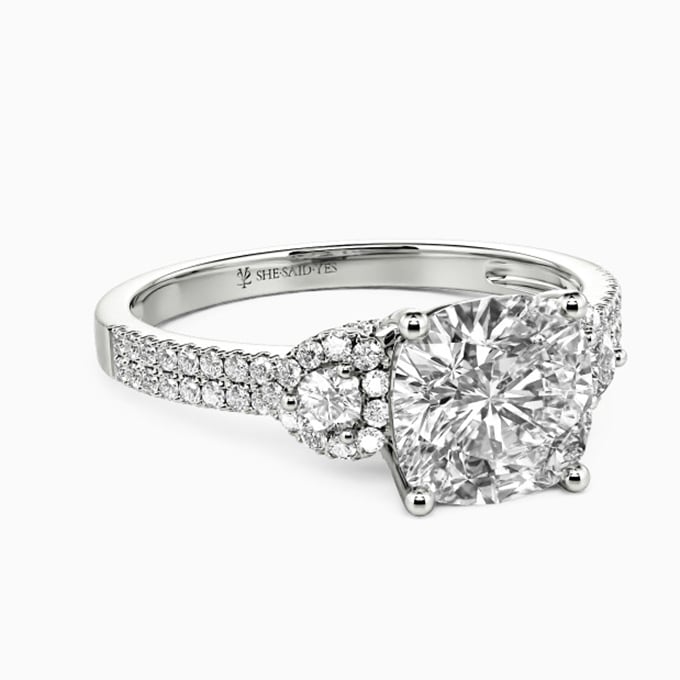
2. Tapered Shank
A tapered shank gradually narrows as it approaches the center stone. This design draws the eye towards the center stone, making it appear larger and more prominent. Tapered shanks can create a sleek, elegant look and are particularly flattering on longer fingers.
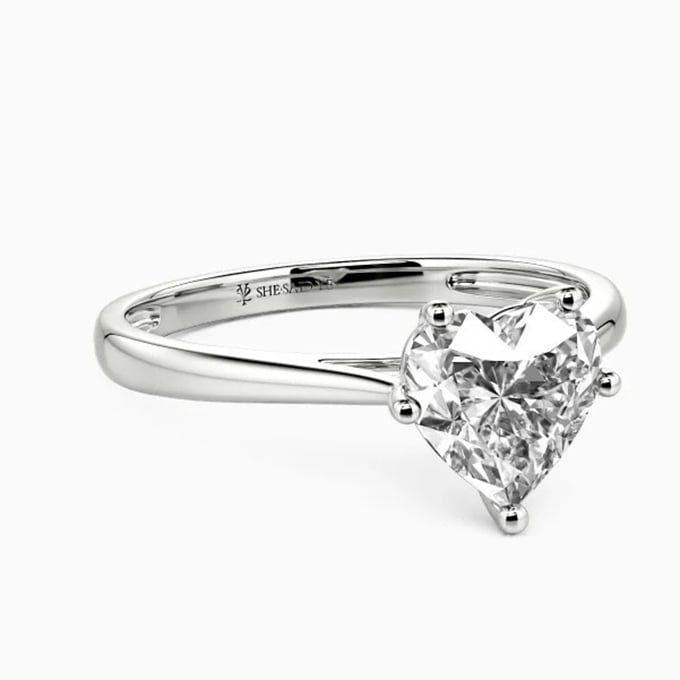
3. Twisted Shank
A twisted shank features metal that appears to be woven or twisted around the finger. This style adds visual interest and a unique, romantic touch to the ring. Twisted shanks can vary from subtle, gentle twists to more dramatic, rope-like designs, offering a range of options to suit different tastes.
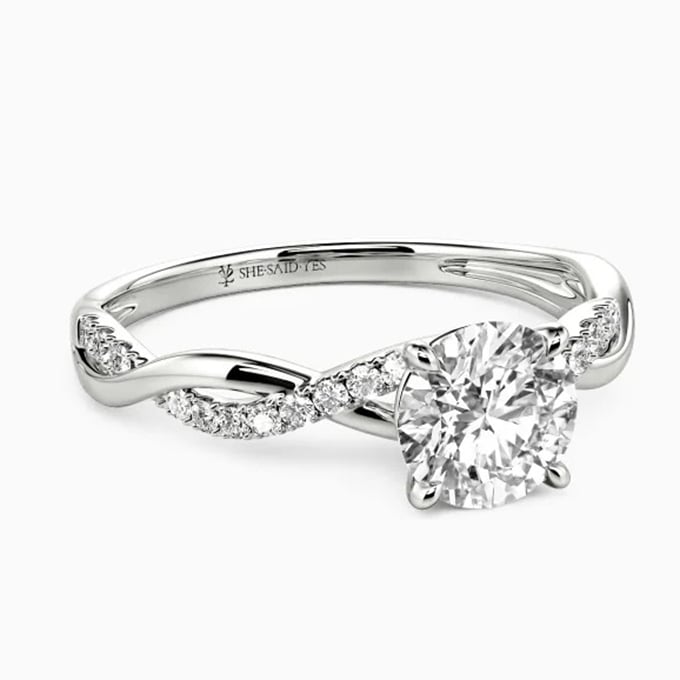
4. Split Shank
A split shank separates into two or more strands as it approaches the center stone. This style can create the illusion of multiple rings and adds a modern, architectural element to the design. Split shanks can also make the center stone appear larger and provide additional space for accent diamonds or intricate metalwork.
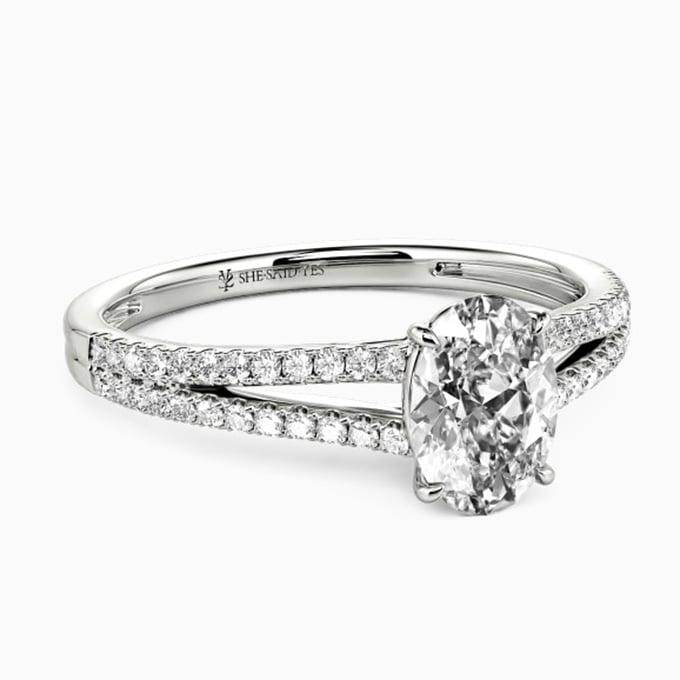
5. Bypass Shank
A bypass shank features a unique design where the ends of the band appear to cross over each other rather than meeting in a complete circle. This style creates a sense of movement and can showcase two stones side by side or emphasize a single center stone. Bypass shanks offer a modern, asymmetrical look that can be both elegant and eye-catching.
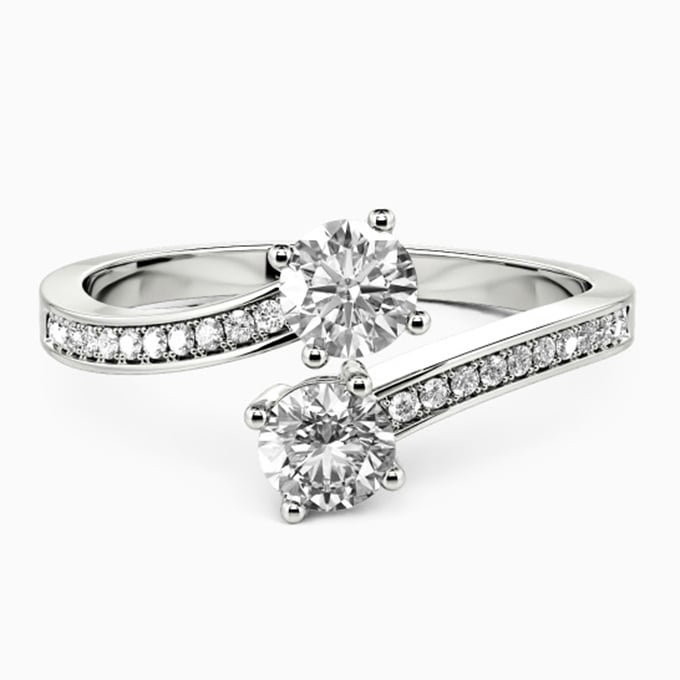
6. Crossover Shank
This style features two or more shanks that intersect or cross over each other, creating an intertwined look. They can be simple with just two crossing shanks or more complex with multiple intersections, often incorporating accent stones at the crossing points for added sparkle.
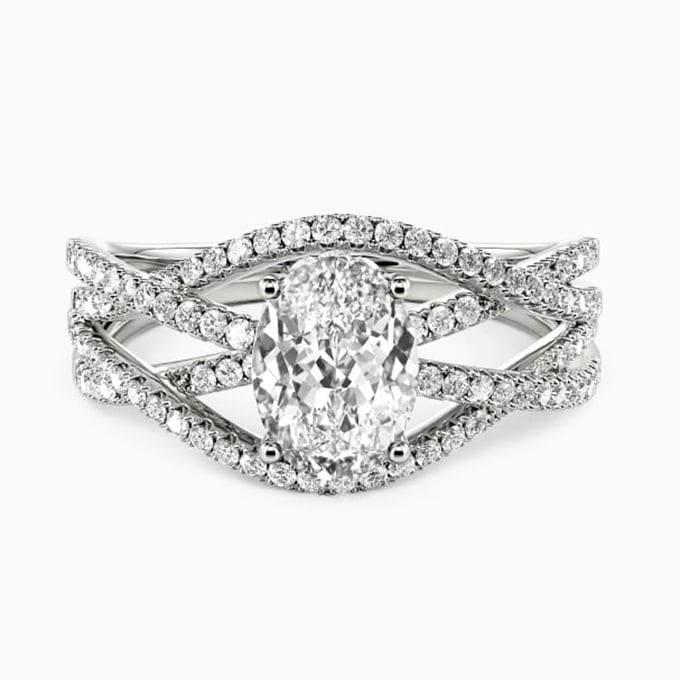
Accent settings
Accent settings are additional design elements that enhance the main stone or overall ring design. These settings add extra sparkle, detail, and personality to engagement rings. These accent settings can be used individually or in combination to create unique and personalized engagement ring designs.
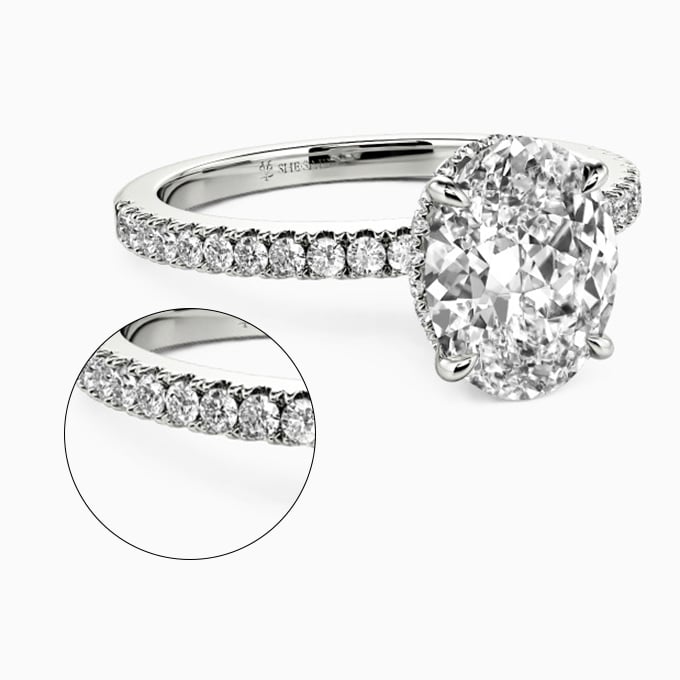
1. Pavé
Derived from the French word for “paved,” this setting features small diamonds set closely together with minimal metal visible. Tiny beads or prongs hold the stones in place, creating a surface that appears to be paved with stones. Pavé adds significant sparkle, creating a luxurious, diamond-encrusted look.

2. Cluster
This versatile setting groups multiple smaller stones together to create the appearance of a larger stone or to form a specific shape. Cluster settings can create floral designs and geometric patterns or simply maximize the visual impact of smaller gems. This setting is ideal for achieving a bold look while potentially reducing costs compared to a single large stone.
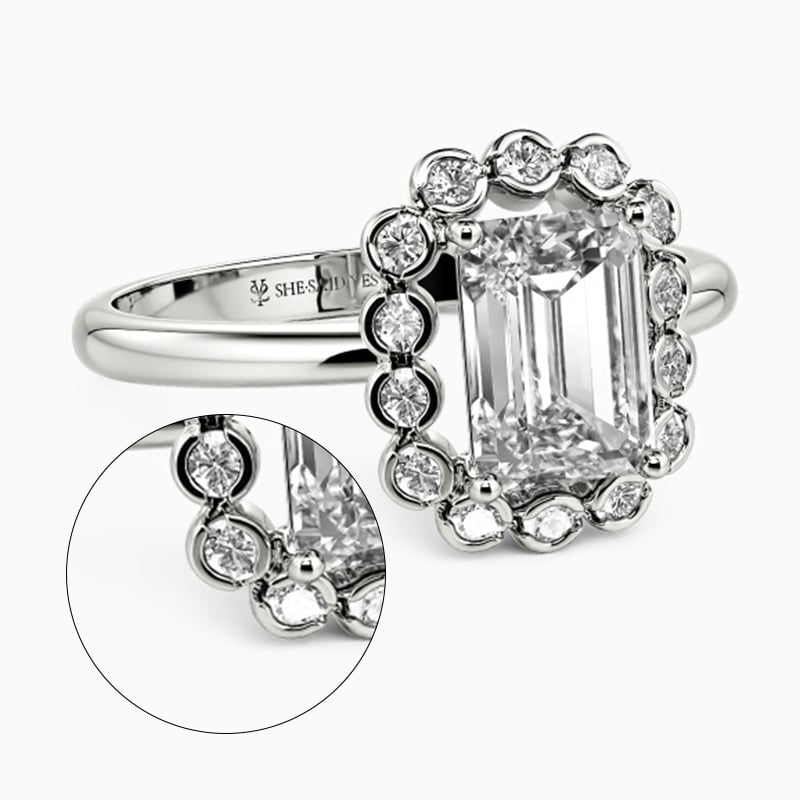
3. Bezel
While often used for center stones, bezel can also be an accent setting. In this style, A thin border of metal fully surrounds each stone, offering excellent protection. Bezel settings offer excellent protection for the stones, making them ideal for active lifestyles. They can also create interesting geometric designs and a smooth, modern aesthetic.
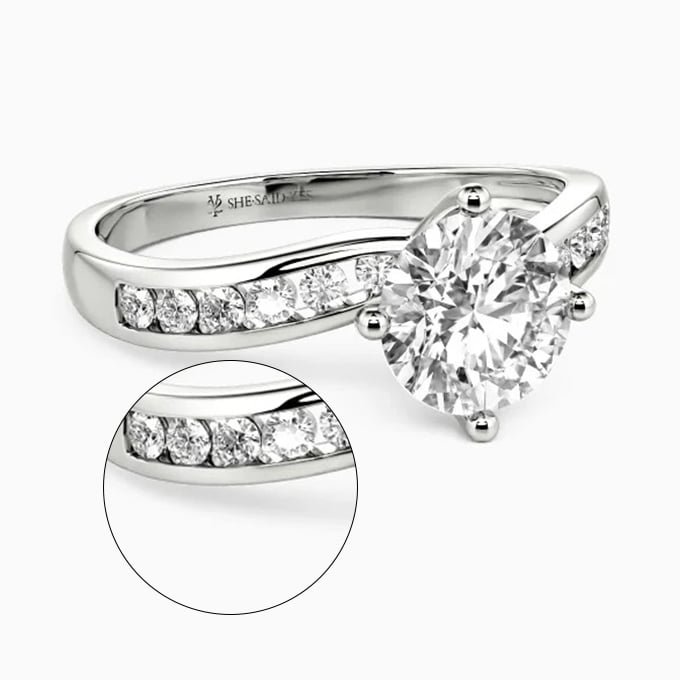
4. Channel
Channel settings feature a row of gems set within a channel in the band. Two parallel walls of metal securely hold the stones, with no visible prongs. This creates a sleek, modern look and protects the stones from snagging or falling out.
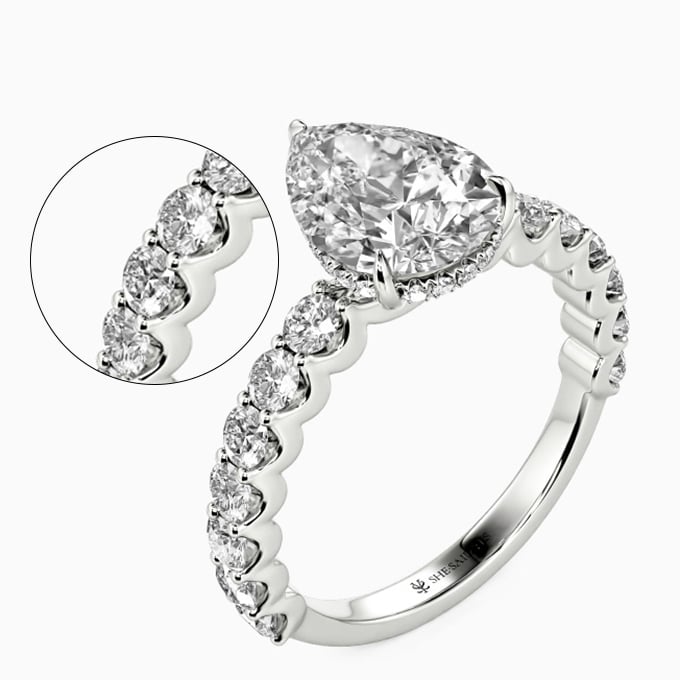
6. Shared Prong
In this efficient and elegant setting, adjacent stones share prongs, creating a row of closely set diamonds with minimal metal showing. This also allows for maximum light exposure, resulting in enhanced brilliance.
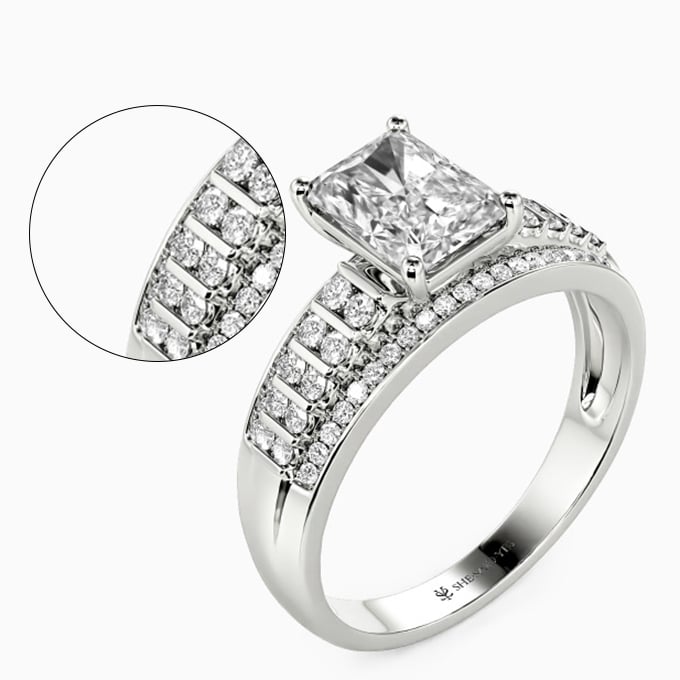
7. Bar
Bar settings use vertical metal bars to separate and secure the accent stones. These bars hold each stone in place while allowing more light to enter from the sides, increasing brilliance. Bar settings can be used to create interesting patterns or to add a modern touch to classic designs.
Decorative Embellishments
Decorative embellishments add intricate details and personalized touches to engagement rings. These techniques enhance the ring’s overall design and can reflect various styles, from vintage to modern.
1. Milgrain
Milgrain, meaning “thousand grains” in French, features tiny metal beads along the edges of a ring. This technique creates a delicate, textured border that adds a vintage flair and softens the appearance of metal edges. This embellishment also imparts the ring a touch of romance and old-world charm.
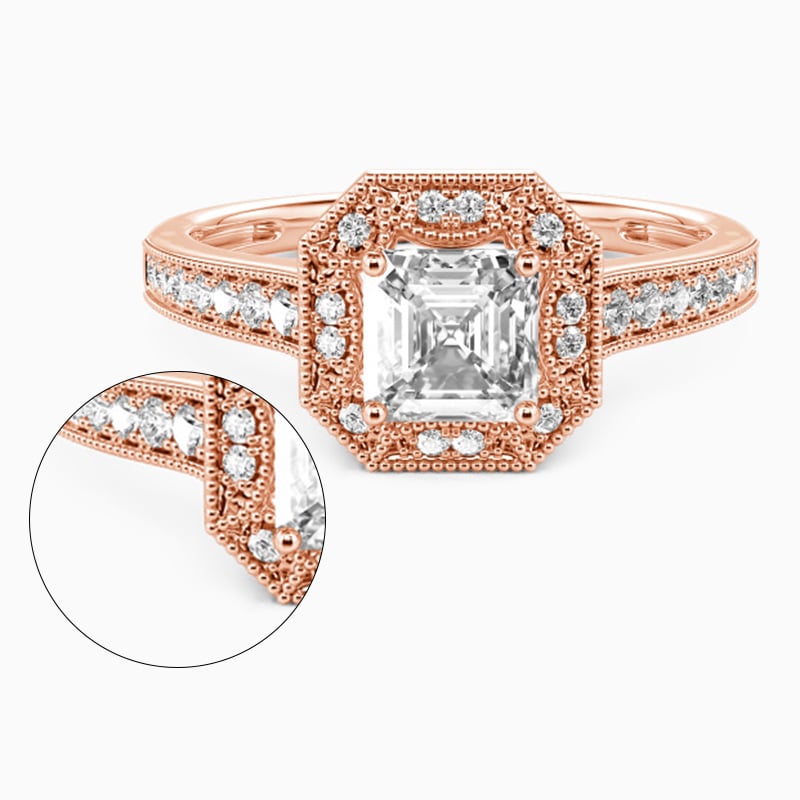
2. Filigree
Filigree is a delicate and intricate metalwork technique involving twisted, curled, and soldered thin metal threads to create lace-like patterns. This ornate embellishment often showcases swirls, scrolls, and other decorative motifs, adding depth and character to a ring. Filigree is particularly popular in vintage-inspired designs, where it creates an airy, romantic look and makes each piece unique.
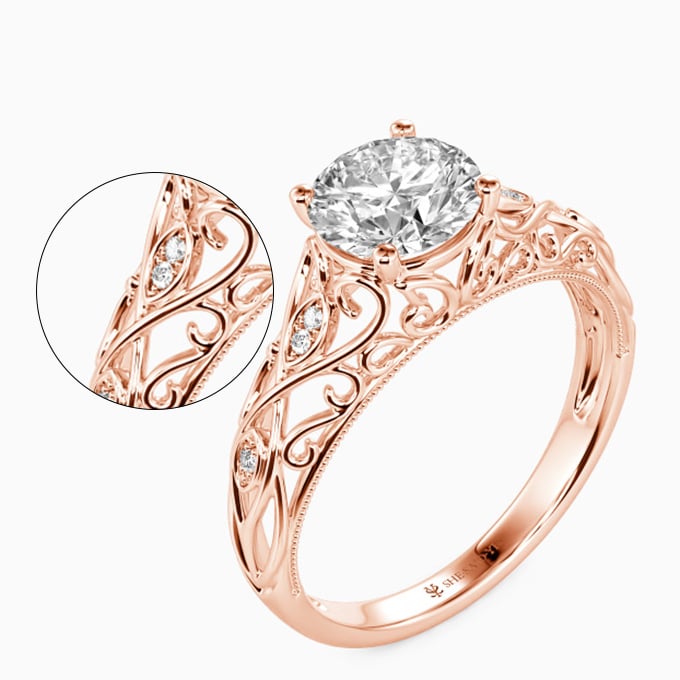
3. Engraving and Carving
Engraving and carving allow for personalized details on your ring. These techniques can add text, such as names, dates, or meaningful phrases, to the inside or outside of the band. Carving, on the other hand, involves etching designs directly into the metal, creating textured patterns or intricate scenes.

These decorative embellishments can transform a simple ring into a work of art. Whether you prefer the subtle texture of milgrain, the intricate beauty of filigree, or the personal touch of engraving and carving, these techniques allow you to create a truly unique engagement ring that reflects your style and love story.

